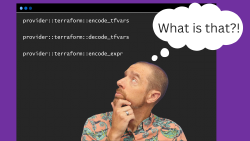


This is about building my personal brand. If you don’t care about any of that, then you can safely skip this post. If you’re looking for ways to automate your brand building, then this will probably resonate with you. There was a period of time when I thought that marketing myself and having a personal brand was kind of gross. Now I realize that personal branding is pretty important if you want to build a career in the public side of IT. I am not making the argument that the only way to progress in your IT career is by being active on social media, community meetups, and actively blogging. But for a certain type of career path, the one that I seem to be on, those things definitely help.
At a client meeting a few weeks ago, one of the people I was meeting with commented on how they were enjoying my posts on LinkedIn. He asked how I had time to post on LinkedIn throughout the week, even on weekends, with all the other things I was doing. The truth is, I don’t have time to do that. But I understand that building up a following is about posting consistently. I tend to consume my news in large chunks at a time. Sitting on the couch at night I might spend an hour reading, and during that period I may want to share five or six articles of interest. But I don’t want to share them all in one big block. Those posts need to trickle out on a regular basis, to increase the likelihood that one or more of them will be seen. I also want to be able to share my content on more than one platform, and spread out posts about the same topic, so that my posts are more likely to be seen.
To that end I signed up for Buffer. Buffer allows you to schedule posts on various social media platforms well in advance. It also uses a link shortener that allows the platform to track the click through rate on your posts, so you know what people are interested in and what didn’t resonate. In theory I could analyze trends and try to make a determination about what types of posts are likely to generate interest. There’s probably a case here to be made for using AI and ML to devise a posting schedule and strategy that guarantees an improvement in click-through rates, but I’m not trying to make money on ads or anything. Click through does nothing if I’m alienating people with salacious posts or improperly polarizing statements. Sure that stuff probably generates interest in the short term, but it will backfire in the long term.
Wow, that was a bit of a digression now wasn’t it? Where was I? Oh yes, Buffer. So I signed up for the free version of Buffer initially, but eventually I started to bump up against the limits of the free account. There were certain posts I might want to repeat on a regular basis, called Re-buffer. There was also a limit of 10 posts in my queue, and if I wanted to schedule stuff out in the future, then I couldn’t do that. For instance, I might want to buffer up a bunch of posts about my Pluralsight courses. I couldn’t really dive into the analytics side of things, and there was a limit on how far ahead I could schedule posts. All in all, I need to go Pro. The cost was reasonable, and the features were enough to push me from Free to Paid.
Do you remember Google Reader? If you’re the type of person who does, then you may have had to take a moment and collect yourself. Google Reader was the best product that Google ever let die. It was a solid RSS reader and aggregator of content. No frills, no unnecessary graphics or weird UI quirks. It stripped out the crap from sites and let you just read the damn news. Obviously it was doomed from the start, but it was how I chose to consume the news. When the door shut forever on the best RSS reader - not bitter - I turned to Feedly to fill the hole left in my heart. It wasn’t a perfect fit, but it got the job done. And that continued to be the case for several years. I used the free version of Feedly, and it did what I wanted. There were a few things that pushed me over the edge to get the paid version. First, I started to hit the upper limit on how many things I can subscribe to - the free version is 100 sources. I have started subscribe to a lot of smaller blogs that may not post a lot, but tend to be high quality when they do. Scott Lowe and Ivan Pepelnjak are great examples. I also wanted to automate the process of sharing posts that I find interesting. Why? Let me explain, no no there is too much, let me sum up.
I have a podcast called Buffer Overflow. We have a lightning round at the end of each episode. I flag articles in Feedly as part of the lightning round Feed, and then reference that when preparing the episode. I want anything that goes into that Feed to automatically be buffered in my Twitter and LinkedIn feeds. This is pretty easy to do with Zapier or IFTTT, but Feedly only supports that integration if you are running the Pro version. That was the thing that really pushed me over to the Pro version.
So that’s how I am automating my brand building. There are some other integrations I want to pursue, like automating a repost of old articles that got more than a certain number of views or clicks, or if I add a new post on my Wordpress site, automatically creating 4 posts to be published over the next four weeks. There’s probably some other things that I haven’t even thought of yet, but I feel confident that between Feedly, Buffer, and Zapier I should be able to automate whatever I need to. Which gives me more time to be productive (read: lazy) and removes some of the drudgery of building a personal brand.
Using Provider Defined Functions in Terraform
July 18, 2024

Variable Validation Improvements in Terraform 1.9
July 8, 2024

July 6, 2024
